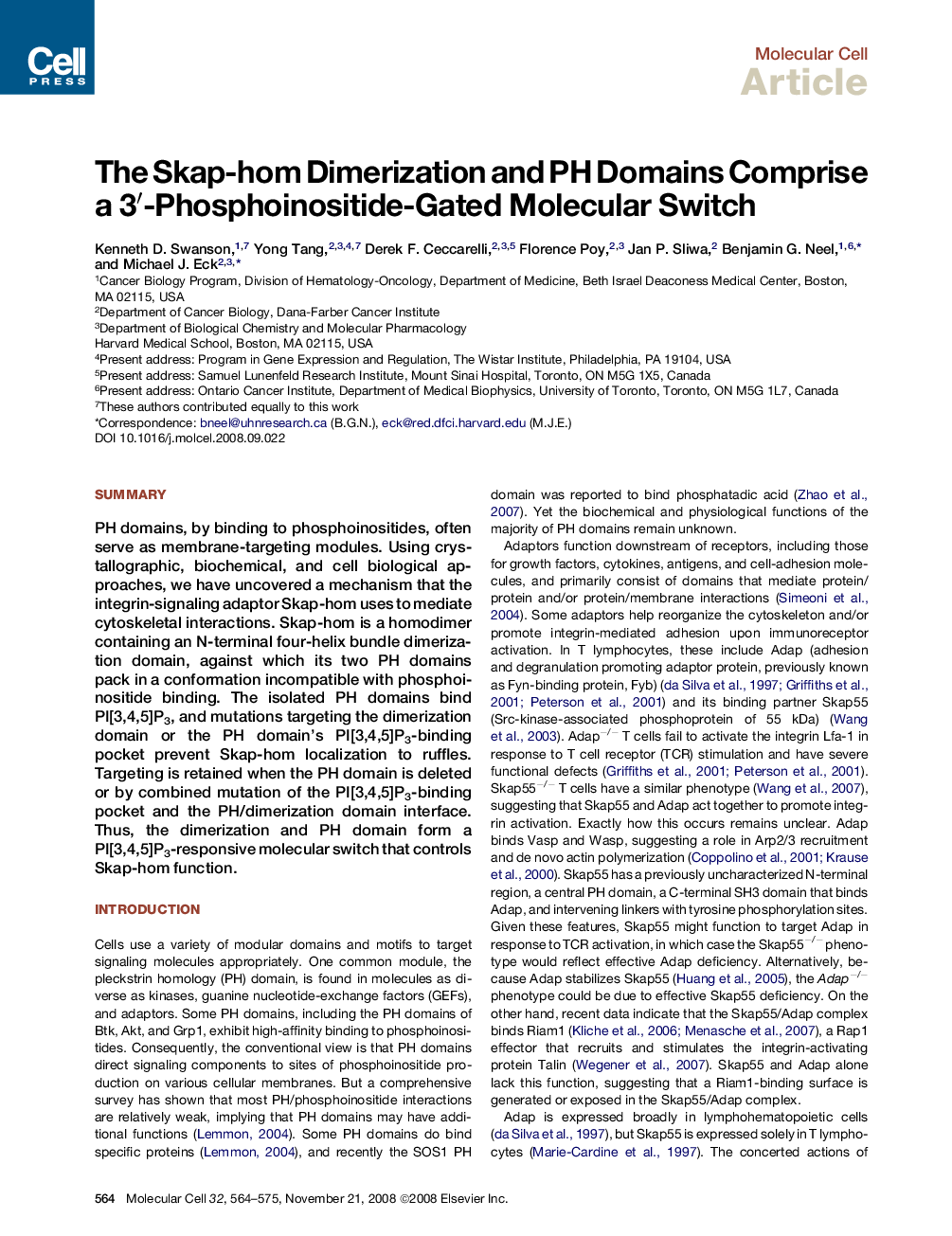| Article ID | Journal | Published Year | Pages | File Type |
|---|---|---|---|---|
| 1997277 | Molecular Cell | 2008 | 12 Pages |
SummaryPH domains, by binding to phosphoinositides, often serve as membrane-targeting modules. Using crystallographic, biochemical, and cell biological approaches, we have uncovered a mechanism that the integrin-signaling adaptor Skap-hom uses to mediate cytoskeletal interactions. Skap-hom is a homodimer containing an N-terminal four-helix bundle dimerization domain, against which its two PH domains pack in a conformation incompatible with phosphoinositide binding. The isolated PH domains bind PI[3,4,5]P3, and mutations targeting the dimerization domain or the PH domain's PI[3,4,5]P3-binding pocket prevent Skap-hom localization to ruffles. Targeting is retained when the PH domain is deleted or by combined mutation of the PI[3,4,5]P3-binding pocket and the PH/dimerization domain interface. Thus, the dimerization and PH domain form a PI[3,4,5]P3-responsive molecular switch that controls Skap-hom function.
